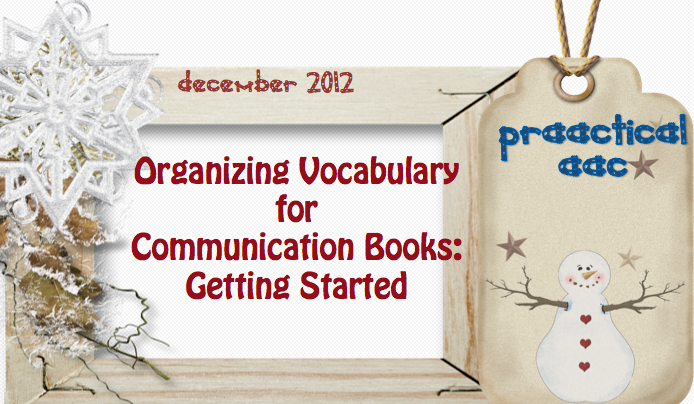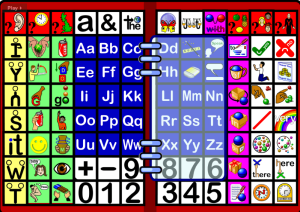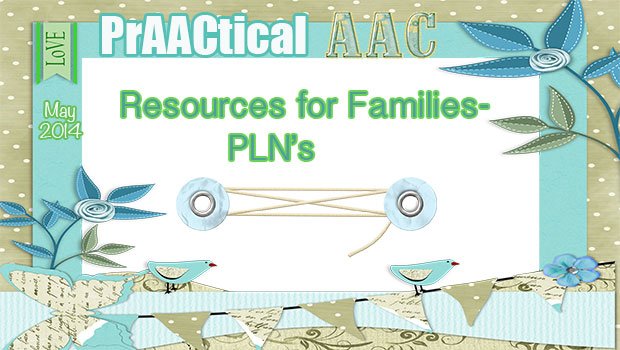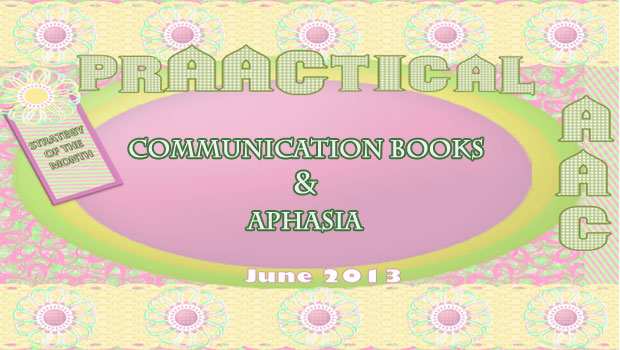Organizing Vocabulary for Communication Books: Getting Started

Organizing vocabulary on communication boards sometimes feels overwhelming, especially if you have not had specific training or education in this area. It is a huge responsibility because if the communicator can not navigate the communication book easily and quickly they might ‘lose’ motivation or ‘lose’ a listener. A problem that often occurs in ordering vocabulary for a communication book is that there appears to have been no plan. And when there are no plans, disorganization usually occurs and with disorganization comes chaos. So to avoid chaos, it is very helpful to make long term plan.
Long Term Plan Considerations- A Beginning:
- Language Learning– it is often helpful to order vocabulary on a communication display so that the communicator can learn language and literacy in addition to functional communication. With this in mind, core and fringe vocabulary can be organized in a way that follows a left to right access to be able to generate language in a typical grammatical sentence structure. Color coding (Fitzgerald key) can also be helpful in helping with language learning. Although color coding is not necessarily part of vocabulary organization, it does help with considering layout.
- Speed of communication: We want to help communicators navigate the communication book as fast as possible because ‘listeners’ often have a hard time waiting. When we consider rate, we usually want as many words on a page as possible with as few pages as possible. With that said, we need to include vocabulary that meets the communicators needs in the situations they are going to be using it. Questions to consider here are – How many cells per page and How many pages? This is often dependent on fine motor skills but remember that it does not always have to initially be related to language level. Some cells can be left blank and filled as the communicator adds more language and vocabulary. Although, we have to be careful to not under-utilize the cells because how can you learn to use words if you have no access to them. Again, this is where core words open up the possibilities.
- Predictable Patterns– When organizing multiple pages in a book, the order should be meaningful to the communicator. This organization system is called Meaningful Arrangement of Pages or M.A.P., kind of like ‘map it out’. Vocabulary page organization can be based on frequency of use, learner preference, time factors, grammatical considerations, or any system that is meaningful to the communicator.
PrAACtical Considerations
- Once a communication board has been made, we do not move vocabulary around to ‘test’ communicators. When vocabulary and vocabulary organization is planned, we ‘teach not test’.
- Once the organizational system has been learned, all additional pages should follow that system.
- We can, but should we automatically ‘copy’ a high tech display as the template for a communication book. Check out an-in depth discussion about this from Gayle Porter & Linda Burkhart in a handout from ATIA 2012: Organizing Vocabulary for Paper Communication and Electronic Dynamic Display Devices: Similarities and Differences
- As always, it is better to start then wait for the perfect product.
If you want more information or some example displays, take a look at these-
Resources for Organized Communication Displays:
Augmentative and Alternative Communication Centers
Filed under: PrAACtical Thinking
Tagged With: COmmunication Books, Organizing Vocabulary
This post was written by Robin Parker





